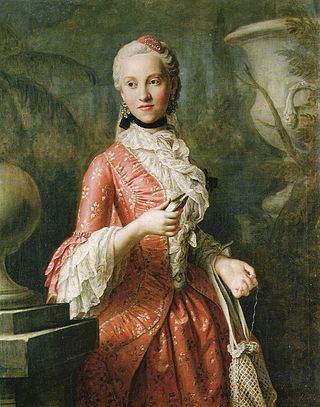
The Cistercian Abbey of Roermond or Munsterabdij was a Cistercian nunnery in Roermond that existed from 1224 to 1797 and of which the Munsterkerk is the only physical remnant.

The Cistercian Abbey of Roermond or Munsterabdij was a Cistercian nunnery in Roermond that existed from 1224 to 1797 and of which the Munsterkerk is the only physical remnant.
The name Munsterabdij — at the end of the 18th century Abdije Munster — is formed by the words abdij, abbey, and munster, which comes from the Latin monasterium, itself meaning monastery. It was originally called the Monastery of the Blessed Virgin Mary (Dutch: Klooster van de Heilige Maagd Maria). [1]
The official foundation of the monastery can be established on 16 June 1224. That is when, in the presence of the papal legate Conrad van Urach, the foundation deed was signed by Gerard III, Count of Guelders, and his wife, Margaret of Brabant. However, this signing was only a legal formality, as the monastery had been established in Roermond several years earlier, from 1218. [2] The monastery church was incorporated in the Cistercian order in 1220, [3] although the building might not have been completed by then. It was consecrated by the Archbishop of Cologne. [3] The first abbess was Richardis of Bavaria, widow of Count Otto I of Guelders and mother of Gerard III. [4] At her request, the abbot of Kamp was appointed visitor by the pope. [3] She died in 1231 and was buried in the abbey.
On 18 February 1797, the sisters were forced to leave the convent by the French. Seven remaining nuns then moved in with one Mrs. Luitjens, but later all returned to their parental home. The last abbess of the abbey, Maria Josepha de Broich, died in Roermond on 8 February 1808.



The Munsterkerk, today a parish church, is the only remnant of the monastery. Originally on the south side of this church there was a cloister with the refectory, chapter house, palace hall (?) and, on the first floor, the dormitory. West of the Munsterkerk, where the music kiosk now stands on Munsterplein, originally stood the abbesses' house, which is mentioned as early as 1293. There was a building on Hamstraat, which probably served as a guest house. The large gate, which gave access to the monastery grounds, was also located on the same Hamstraat.
During the French occupation, the abbess house was used as a prison while the other buildings served as barracks. [4] When the prison was moved elsewhere in the middle of the 19th century, the abbess house and some other dilapidated buildings were demolished to make way for a public park. What remained of the other buildings was demolished in 1924, despite a fierce rescue by priest and history expert Mgr. Van Gils.

Roermond is a city, municipality, and diocese in the Limburg province of the Netherlands. Roermond is a historically important town on the lower Roer on the east bank of the river Meuse. It received town rights in 1231. Roermond's town centre has become a designated conservation area.

The Fraumünster is a church in Zürich which was built on the remains of a former abbey for aristocratic women which was founded in 853 by Louis the German for his daughter Hildegard. He endowed the Benedictine convent with the lands of Zürich, Uri, and the Albis forest, and granted the convent immunity, placing it under his direct authority. Today, it belongs to the Evangelical Reformed Church of the canton of Zürich and is one of the four main churches of Zürich, the others being the Grossmünster, Prediger and St. Peter's churches.

Essen Abbey was a community of secular canonesses for women of high nobility that formed the nucleus of modern-day Essen, Germany.

The Obermünster, or Obermünster Abbey, Regensburg, was a collegiate house of canonesses (Frauenstift) in Regensburg, Bavaria, second only to Niedermünster in wealth and power.

Brecht Abbey, also known as the Abbey of Our Lady of Nazareth, is an abbey of Trappistine nuns located in Brecht, in the Campine region of the province of Antwerp. Life in the abbey is characterized by prayer, reading and manual work, the three basic elements of Trappist life.

Hendrik van den Bergh, 1573 to 22 May 1638, was a Flemish noble and professional soldier. Hereditary lord of Stevensweert, from 1618 to 1637 he was also stadtholder of Upper Guelders, the only part of Guelders to remain loyal to Habsburg Spain during the Eighty Years War. Known as a brave and resourceful cavalry commander, he spent most of his career with the Spanish Army of Flanders and became its Maestre de campo in 1628. Accused of treachery after the loss of Den Bosch in 1629, he defected to the Dutch Republic following the 1632 Conspiracy of Nobles.

Forest Abbey or Vorst Abbey was a Benedictine abbey located in the Brussels municipality of Forest, Belgium. It was founded in 1105 and existed for nearly 700 years, until its partial destruction by fire in 1764. It was abolished in 1796. Only the abbey's 18th-century outbuildings have been preserved. They are now owned by the municipality and serve as a cultural centre.

Thorn Abbey or the Imperial Abbey of Thorn was an imperial abbey of the Holy Roman Empire in what is now the Netherlands. It was founded in the 10th century and remained independent until 1794, when it was occupied by French troops. The self-ruling abbey enjoyed imperial immediacy and belonged to the Lower Rhenish-Westphalian Circle.
Egres Abbey was a Cistercian monastery in the Kingdom of Hungary, located in Egres. The Egres Abbey was founded by Béla III of Hungary in 1179 as a filial abbey of Pontigny. Here is attested the oldest library in the territory of present-day Romania.

The Munsterkerk (Munster) is a 13th-century church dedicated to Our Lady in the Dutch town of Roermond. Its remarkable front towers are 55 meter in height. The Munsterkerk is one of the most important examples of Late Romanesque architecture in the Netherlands. The Roermond Minster is the only surviving part of an abbey, the rest of which was demolished in 1924. The church was renovated by architect P. J. H. Cuypers between 1863 and 1890; during this renovation, the two front towers were added while after a smaller baroque bell tower on the nave was removed, and the originally octagonal eastern towers were replaced by square ones. The renovation of the Roermond Minster was highly controversial, but Cuypers continued to renovate the Minster according to his plan.
Richardis of Bavaria was a German noblewoman. She was a daughter of Count Palatine Otto I of Bavaria, who later became the first Wittelsbach Duke of Bavaria, and his wife Agnes of Loon.

Maria Kunigunde of Saxony was Princess-Abbess of Essen and Thorn. She was a titular Princess of Poland, Lithuania and Saxony of the Albertine branch of the House of Wettin. She was a member of the Order of the Starry Cross and a collegiate lady in the abbey at Münsterbilzen.
Rottenmünster Abbey, also the Imperial Nunnery of Rottenmünster, was a Cistercian abbey located near Rottweil in Baden-Württemberg. The self-ruling Imperial Abbey was secularized in the course of the German mediatization of 1802–1803 and its territory annexed to the Duchy of Württemberg. The monastery was closed in 1850. The buildings of the former abbey now house a hospital.

Oosteeklo Abbey was a Cistercian nunnery founded in Oosteeklo in 1217 and later moved to Ghent.
Joanna de Hertoghe was an abbess of the Cistercian Oosteeklo Abbey in Ghent.
Matilda of Guelders and Zutphen, was a countess from the House of Wassenberg and by marriage countess of Nassau. She is a direct ancestor of both the Kings of the Netherlands and the Grand Dukes of Luxembourg.
Bernardusdal Abbey was a house of Cistercian nuns originally established just outside Diest in the Duchy of Brabant, and later within the walls of the town itself.
Henrica van Erp, was a Dutch abbess and author of her monastery's Chronicle, making her one of the first historians of 16th-century Netherlands.

Diederik II Count of Limburg Hohenlimburg was a son of Everhard I and Agnes.

Diederik III of Limburg Hohenlimburg, born around 1328, was the eldest son of Everhard II van Limburg Hohenlimburg and Juta of Sayn. Twenty years later he followed the 9th of August 1364 his grandfather Diederik II count of Limburg Hohenlimburg. In 1366 Diederik III became the Amtmann of Angermünde, the district between Duisburg and Düsseldorf. As the successor to lord Diederik III of Broich, who five years later would become his father-in-law. He also was Voght of the Rellinghausen Abbey. On 3 July 1371 Diederik married Ludgardis (Lukarda) daughter of Diederik of Broich and Katharina of Steinfurt. Lukarda was heiress of the Lordship Broich. At his wedding, he received a dowry of 1,600 old gold shields.